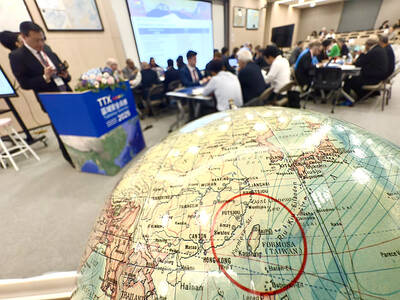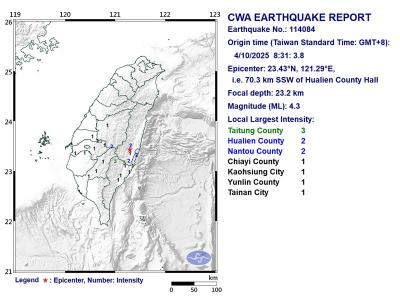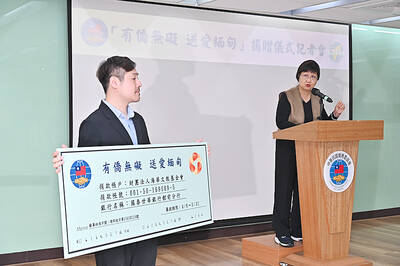The nation’s Aboriginal population has increased by 90,000 in the past 10 years, from more than 420,000 in 2001 to the more than 510,000 last year, according to latest statistics released by the Ministry of the Interior.
Among the increases, 120,000 more children between the age of 15 and 19 registered their Aboriginal identity last year, compared with 10 years ago, which is a 33.66 percent increase, the data showed.
Commenting on the phenomenon, Association of Taiwan Indigenous Peoples’ Policies member Pasang Hsiao (蕭世暉) said the increase in Aboriginal identity registration among adults shows that identifying oneself as Aborigine is rising, however, the increase among students could mean that those Aboriginal students want to take advantage of bonus points allocated for Aboriginal students in school entrance exams.
Mayaw Biho, a documentary director from the Amis tribe, agreed with Hsiao’s interpretation, saying that many students are changing their ethnic identity out of practical considerations, but added that many people are also doing so for “ethnic justice.”
Council of Indigenous Peoples Minister Sun Ta-chuan (孫大川) said the increase in the Aboriginal population is related to welfare incentives, but he believes that increased harmony among ethnic groups and less ethnic discrimination have also continued to increase the self-identity of Aborigines.
Currently, Aborigines enjoy benefits such as bonus points on entrance exams, as well as subsidies for pre-school education, study abroad, tuition, better old-age pensions and the right to buy or sell Aboriginal reserve lands to make up for the disadvantages experienced by Aborigines in the economy, education and employment.
However, Sun said that, based on the concept of equality as stated in the Constitution and the improvements in education and gaps in resources as many Aborigines move into cities, he has asked officials to look into setting up a threshold to exclude wealthier Aborigines from enjoying the benefits and welfare reserved for Aborigines.
The minister said the new measure is to avoid making non--Aborigines feel that they are deprived of certain rights due to ethnicity and thus prevent ethnic conflicts that such feelings could trigger, and leave the limited resources of the state to those who are most in need.

Taiwan is stepping up plans to create self-sufficient supply chains for combat drones and increase foreign orders from the US to counter China’s numerical superiority, a defense official said on Saturday. Commenting on condition of anonymity, the official said the nation’s armed forces are in agreement with US Admiral Samuel Paparo’s assessment that Taiwan’s military must be prepared to turn the nation’s waters into a “hellscape” for the Chinese People’s Liberation Army (PLA). Paparo, the commander of the US Indo-Pacific Command, reiterated the concept during a Congressional hearing in Washington on Wednesday. He first coined the term in a security conference last

DEFENSE: The National Security Bureau promised to expand communication and intelligence cooperation with global partners and enhance its strategic analytical skills China has not only increased military exercises and “gray zone” tactics against Taiwan this year, but also continues to recruit military personnel for espionage, the National Security Bureau (NSB) said yesterday in a report to the Legislative Yuan. The bureau submitted the report ahead of NSB Director-General Tsai Ming-yen’s (蔡明彥) appearance before the Foreign and National Defense Committee today. Last year, the Chinese People’s Liberation Army (PLA) conducted “Joint Sword-2024A and B” military exercises targeting Taiwan and carried out 40 combat readiness patrols, the bureau said. In addition, Chinese military aircraft entered Taiwan’s airspace 3,070 times last year, up about

A magnitude 4.3 earthquake struck eastern Taiwan's Hualien County at 8:31am today, according to the Central Weather Administration (CWA). The epicenter of the temblor was located in Hualien County, about 70.3 kilometers south southwest of Hualien County Hall, at a depth of 23.2km, according to the administration. There were no immediate reports of damage resulting from the quake. The earthquake's intensity, which gauges the actual effect of a temblor, was highest in Taitung County, where it measured 3 on Taiwan's 7-tier intensity scale. The quake also measured an intensity of 2 in Hualien and Nantou counties, the CWA said.

The Overseas Community Affairs Council (OCAC) yesterday announced a fundraising campaign to support survivors of the magnitude 7.7 earthquake that struck Myanmar on March 28, with two prayer events scheduled in Taipei and Taichung later this week. “While initial rescue operations have concluded [in Myanmar], many survivors are now facing increasingly difficult living conditions,” OCAC Minister Hsu Chia-ching (徐佳青) told a news conference in Taipei. The fundraising campaign, which runs through May 31, is focused on supporting the reconstruction of damaged overseas compatriot schools, assisting students from Myanmar in Taiwan, and providing essential items, such as drinking water, food and medical supplies,